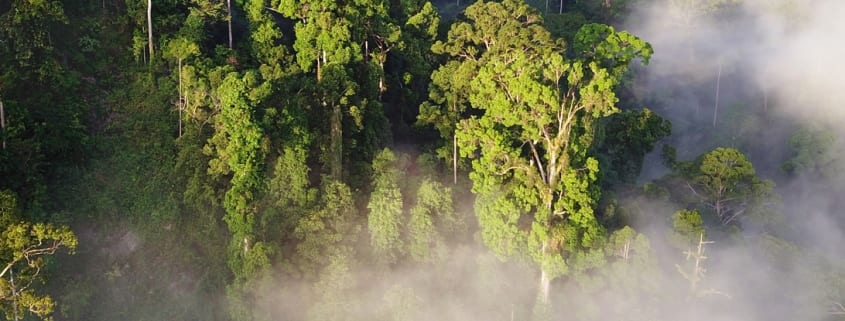The Front Lines of Conservation in the Galápagos Islands
Establishing and managing nature reserves is very demanding, and it requires a great deal of experience and perseverance. This past spring, I had the opportunity to take a trip to see first hand the efforts under way in the Galápagos Islands to establish new protection for endangered species, thanks to our generous supporters. I was delighted that I was joined by several of them; Dr. Larry Thompson, George Jett and Heather Galick.
We reviewed several private properties containing stronghold populations of Critically Endangered Galápagos Petrels, as well as other endemic plants and animals. These areas are under pressure for development and in urgent need of protection.
My visit provided an important opportunity to review progress and plan for the future.
I started the conservation expedition with a few days on mainland Ecuador, to visit the 6,100-acre Antisanilla Biological Reserve we helped create in partnership with Fundación Jocotoco in 2013. This was a really great visit, because it was evident that native wildlife is already booming in the reserve that is less than 30 miles from Quito, Ecuador’s capital city. I saw plenty of condors here, and migratory shorebirds resting in the reserve’s wetlands.
I am very proud of the work Jocotoco’s team is doing with Rainforest Trust’s support to protect this and many other vital areas of Ecuador’s rainforest.
Then we were on to the Galápagos Islands, the inspiration for Charles Darwin’s theory on biological evolution, where the Rainforest Trust team spent a week visiting priority conservation areas and traveling amongst the southeastern islands, taking in their unique beauty at every step.
The Galápagos, an archipelago of volcanic islands located on either side of the equator in the Pacific Ocean, are renowned for their vast number of endemic species. And just like Charles Darwin, who began his research on San Cristóbal, we began our adventure on that island as well.
The Galápagos were truly magnificent, with approachable wildlife found nowhere else.
We were greeted by throngs of sleepy and passive Galápagos Sea Lions lying around town!
We visited the proposed Galápagos Nature Reserve site and realized the pressure from development was evident everywhere. In fact, the exponential growth of the island’s human population has resulted in large-scale encroachment of infrastructure onto natural habitats across the entire island – to a much greater extent than I had realized before taking this voyage.
Ecotourism on all the islands is both their greatest ally and their greatest pressure, and therefore finding a true balance is key.
Another major pressure for native Galápagos wildlife – which we witnessed firsthand at our proposed project site – is non-native invasive species. For example, there are over 500 species of terrestrial non-native plant species on the Galápagos. That’s more than native plant species! Unfortunately, plants introduced in recent decades have spread rapidly to dominate native flora, and they are not the right species to sustain other native wildlife.
One of the principal focuses of the Galápagos Nature Reserve is to remove non-native plants and allow native species and wildlife to flourish on San Cristóbal. Between pressures from development and invasive species, the urgency to protect this unique habitat is very real.
We also had a chance to visit the Galapaguera de Cerro Colorado Nature Preserve, which houses a breeding center for the Endangered San Cristóbal Giant Tortoise. We were fortunate to see a few of these majestic tortoises in the wild, some of which were estimated to be over 100 years old.
We also hiked into Punta Pitt on the eastern end of San Cristóbal; this is the only place throughout the island chain where you can observe all three species of boobies native to Galápagos and two species of frigatebirds. We saw all of them!
After leaving San Cristóbal, we toured several more islands, seeing amazing wildlife at every stop. We watched sea lions, sea and land iguanas, Swallow-tailed Gulls, shearwaters and Waved Albatrosses, as well as more boobies and frigatebirds.
This was truly an experience of a lifetime for me, and I am looking forward to returning to see the first private nature reserve established in these “Enchanted Islands”!




